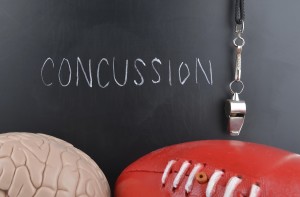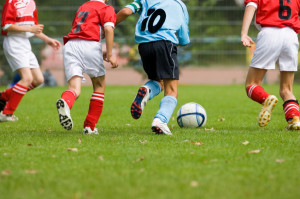Parents and Coaches Are Warned: Take Concussions Seriously
The Centers for Disease Control (CDC) is worried about concussions in our kids. A concussion is a brain injury, they emphasize. It’s not getting his bell rung. It’s not a little bump on her head. Any brain injury is cause for concern, is the message.
The new policy preceded a flurry of headlines:

- San Francisco 49s star defender Chris Borland retired after one season, because of his own concern about head injuries. Borland had read about NFL greats who died with traumatic brain injuries.
- Mexican wrestler Petro Aguayo Ramirez died after suffering a blow to the head in the ring.
- Bruised or bleeding lung
- Government-sponsored research in Ontario shows that people who had suffered from a concussion were more likely to exhibit road rage, even decades after the injury.
While doctors may be well aware of the dangers, the CDC is now aiming for coaches and parents who are usually the first to know when a child has had a concussion.
Any « forceful bump, blow, or jolt to the head or body that results in rapid movement of the head » and « any signs or symptoms such as a change in the athlete’s behavior, thinking, or physical functioning . . .
« Any worsening of signs or symptoms indicate a medical emergency, » according to the CDC, whose new slogan is, « It’s better to miss one game than the whole season. »
Head Injuries Now Seen as Life-Affecting
A blow to the head can cause the brain to slam against the inner skull and damage brain cells, causing chemical changes, especially in the growing brain. While the results of concussions can show up years— even decades— after the original injury, there are often immediate signs of trouble.
The CDC lists the following clues for coaches:

- The athlete appears stunned or dazed
- He or she is confused about his assignment or position
- He or she forgets an instruction
- The athlete is unsure about the game, score or opponent
- They move clumsily or answer questions more slowly than usual
- He or she loses consciousness (even for a brief time)
- The athlete shows changes in mood, behavior or personality
- He or she can’t remember the events just prior to or after the hit or fall
Coaches should call 911 or take the athlete to the emergency room if one pupil is larger than the other; if the athlete is drowsy and can’t be aroused; has a headache that gets worse; starts to vomit or complains of nausea; shows slurred speech, convulsions or seizures; doesn’t recognize people; becomes confused, restless or agitated; exhibits unusual behavior; or loses consciousness for any length of time.
Medical Evaluation Should Take Place ASAP
One critical reason for an immediate response is to remove the patient from play if there has been a head injury.
If a patient has suffered a blow to the head or neck or upper body, it’s important that he or she be evaluated by a medical specialist as soon as possible. Many young athletes appear at our clinic with orthopedic injuries and are not aware that they may have brain damage.
The doctor will have the patient monitored for concussive signs and symptoms.
Once a young athlete has had a concussion, the brain needs time to heal. Another blow that follows before the brain has completely healed can slow recovery or increase the risk of long-term damage. In rare cases, repeat concussions can cause brain swelling or permanent brain damage.
The athlete is not usually the best judge of whether he or she is fit to return to their sport. Other observers— such as parents, coaches, teachers, and of course, doctors— are more apt to notice changes that indicate a problem.
Remind your child: Better to miss a game than to miss a season. Or, more to the point: Better to miss a season than to damage your life.











